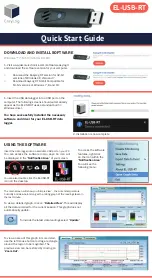
Channel 1, Channel 2, Channel 3 > Name
Give each measurement channel (sensor) a unique name. This helps to distinguish data from
multiple sensors as it is stored in the final storage table and eventually collected into data files by
LoggerNet
or
PC400
.
Channel 1, Channel 2, Channel 3 > Enabled
This setting is used to specify whether the channel will be actively measured or not. When set to
False, any sensor connected to the channel will be ignored.
Channel 1, Channel 2, Channel 3 > Excitation Voltage
This setting controls how much electrical excitation is applied to the vibrating-wire sensor just
before being measured for its natural frequency. The excitation waveform is a frequency-rich
sweep, containing frequencies from the lowest to the highest desired frequencies required for
the sensor being measured. The amplitude of the input sweep waveform is controlled by this
setting. Amplitudes of 2 VDC, 5 VDC, and 12 VDC can be selected. Longer sensor cable lengths
may require a higher voltage setting. Sensors measured on intervals three seconds or shorter
may require the lowest (2 VDC) voltage setting to avoid loss of resolution.
Channel 1, Channel 2, Channel 3 > Begin Frequency
This setting controls the lower frequency boundary that is used for the excitation sweep
waveform. It also controls the high-pass digital filtering that is used on the measurement of the
sensor. Any frequency detected on the sensor lower than this value will be ignored during
processing.
Refer to your sensor documentation for guidance on what frequencies can be expected from
your sensor during both usual and extreme environmental conditions. Sensors measured on
intervals three seconds or shorter should use as narrow a window as possible to minimize the
range between Begin Frequency and End Frequency and avoid a loss of resolution.
Channel 1, Channel 2, Channel 3 > End Frequency
This setting controls the higher frequency boundary that is used for the excitation sweep
waveform. It also controls the low-pass digital filtering that is used on the measurement of the
sensor. Any frequency detected on the sensor higher than this value will be ignored during
processing.
Channel 1, Channel 2, Channel 3 > Thermistor Enabled
Set this setting to True if you have connected a built-in resistive temperature device from your
sensor. If the temperature sensor is a thermistor that follows the Steinhart-Hart scaling equation,
you can also specify the proper coefficients A, B, and C (given as the three settings following the
Thermistor Enabled setting). This will result in a temperature output in units of degrees Celsius.
Setting the three coefficient values to 0 will result in only the resistance in ohms as an output
CRVW3 3-Channel Vibrating-Wire Data Logger
23
















































